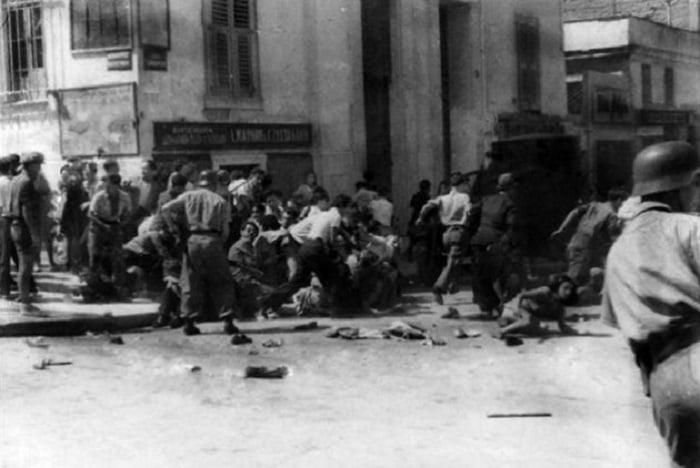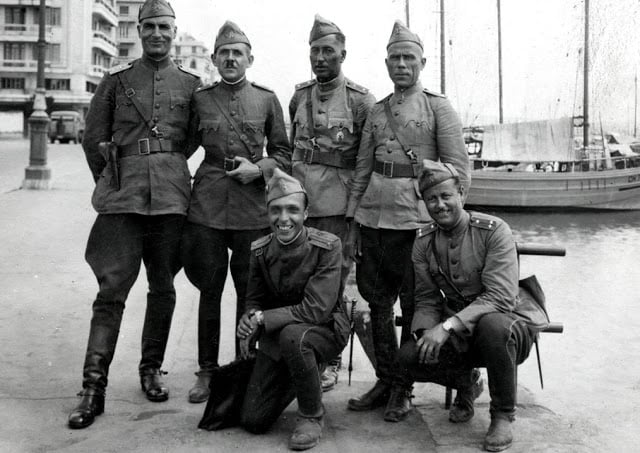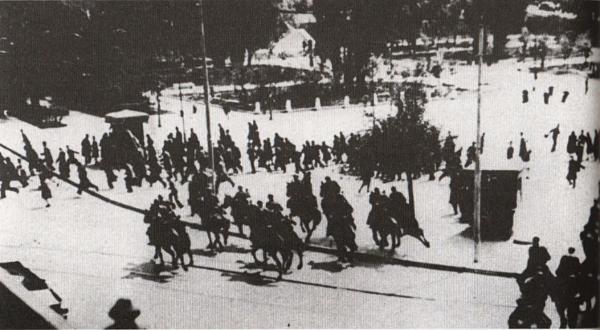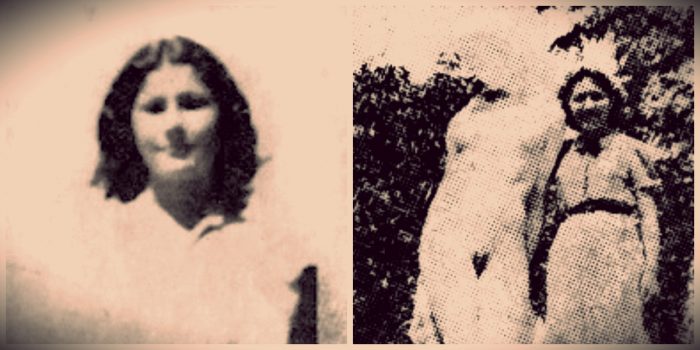
Greeks have a passionate love affair with Macedonia, and even during the darkest hour of modern Greek history during the brutal occupation of the Nazis, they were prepared to give their lives for keeping the province Greek.
On July 22, 1943, a massive protest took place in Axis-occupied Athens against the German plans to expand the Bulgarian occupation zone in Macedonia.
Early in July 1943, Adolf Hitler asked the Bulgarian government to extend its occupation zone to encompass additional territory in Greece.

Bulgaria had already officially annexed parts of Macedonia and Thrace on May 14, 1941.
A massive campaign of colonization was launched, which saw all Greek officials (mayors, school-teachers, judges, lawyers, priests, gendarmes) deported.
Ban on Greek language in Macedonia
A ban was placed on the use of the Greek language, and the names of towns and places changed to Bulgarian.

In addition, the Bulgarian government tried to alter the ethnic composition of Macedonia, by expropriating land and houses from Greeks in favor of Bulgarian settlers and by the introduction of forced labor and of economic restrictions on Greeks in an effort to force them to migrate.
The alteration of the ethnological composition in Eastern Macedonia and in Thrace was already in process in March of 1941 before the invasion of the Bulgarian armed forces. Faced with the specter of a prospective Bulgarian invasion, many Greeks began streaming mainly into the rest of Greece and some from Thrace into Turkey. This wave swelled after the invasion of the Bulgarian army in the region on April 20, 1941.
Upon receiving the news that Bulgaria would further expand its occupation in Macedonia, Greeks became infuriated.
A protest strike, which proved highly successful and paralyzed the city almost completely for 24 hours, was called on July 13th in Athens. Similar protests were organized in Thessaloniki and smaller cities in northern Greece.
Occupiers crush demonstration
A second general strike was organized by EAM on July 22nd. Between 100,000 and 300,000 (or even 400,000 according to some sources) people rallied in central Athens.
A massive crowd attempted to march from Omonoia Square towards Syntagma Square along Panepistimiou Street, but came across a barricade put up by mechanized German army forces, Italian cavalry, and Greek collaborationist police.

Protesters were fired upon during their attempt to breach the barricade and were forced to withdraw, leaving behind twenty-two dead and several hundred wounded.
Workers and university students participated in large numbers in the protest for Macedonia. Several of them were killed, being either run over by armored vehicles or fired upon.
Among them, were Panagiota Stathopoulou and Koula Lili, two of the most remembered today.

Soon after the protest, the plans to extend the Bulgarian occupation zone were postponed indefinitely and never materialized.
See all the latest news from Greece and the world at Greekreporter.com. Contact our newsroom to report an update or send your story, photos and videos. Follow GR on Google News and subscribe here to our daily email!



